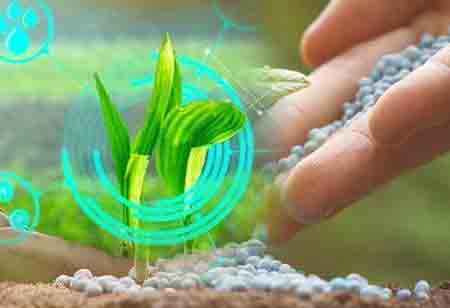Thank you for Subscribing to Agri Business Review Weekly Brief
Impact of IoT on Enhancing Agricultural Efficiency
IoT enhances agriculture by optimizing irrigation, monitoring soil health, predicting climate patterns, and improving crop productivity and sustainability.

By
Agri Business Review | Tuesday, April 08, 2025
Stay ahead of the industry with exclusive feature stories on the top companies, expert insights and the latest news delivered straight to your inbox. Subscribe today.
Fremont, CA: IoT implementation in agriculture is revolutionary because it gives farmers access to a variety of cutting-edge solutions that improve operations, save resources, and increase yields. IoT gives farmers the tools they need to make better business decisions and successfully handle the inherent difficulties in contemporary agriculture by providing real-time data, enabling automation, and providing predictive insights.
One of the most significant ways IoT reshapes agriculture is by developing precision farming techniques. IoT devices like soil moisture sensors, climate sensors, and GPS-equipped machinery allow farmers to track real-time conditions. This data can guide irrigation schedules, planting techniques, and fertilizer applications. The result is a more precise and efficient farming process, lowering costs and improving crop productivity.
Water scarcity is one of the pressing issues facing agriculture today. IoT-enabled smart irrigation systems are helping address this issue by using real-time data from soil moisture sensors and weather forecasting models to automate watering schedules. Smart irrigation systems can adapt the amount of water applied based on soil conditions and weather patterns, ensuring that crops receive optimal hydration while reducing water waste. These systems conserve water, lower energy costs, and reduce the environmental impact of farming.
Soil health is indispensable for the success of any farm, and regular monitoring of it can be a labor-intensive task. IoT devices help automate this process by using sensors to measure soil moisture, temperature, pH levels, and nutrient content. These sensors provide farmers with real-time data on the condition of their soil, allowing them to take corrective actions quickly and optimize growing conditions for crops. IoT technologies can also help detect crop diseases and pests early. By monitoring plant health through remote sensing, drones, and camera systems, farmers can identify areas of concern and take targeted actions to control pest infestations or prevent diseases, reducing the need for harmful chemicals and pesticides.
Climate change is disrupting agricultural cycles, making it harder to predict the optimal times for planting and harvesting. IoT devices like weather stations and atmospheric sensors can collect temperature, humidity, rainfall, and wind speed data. This data is then used to create more accurate forecasts that help farmers anticipate changes in weather patterns and adapt accordingly.
Farmers can plan their activities more precisely with better forecasting and avoid crop losses due to unexpected weather events. For example, IoT-driven climate monitoring systems can help farmers prepare for droughts, heavy rainfall, or frost, minimizing the impact of these events on their crops.





